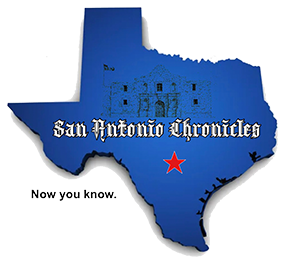A four-block alley wedged between the center of San Antonio’s West Aspect has been named after the Mexican American matriarchs who bought empanadas and tamales to get underserved and infrequently stereotyped college students to school.
Amelia Fuentes together with Isabel and Enrique Sanchez have been political organizers, schooling advocates and fogeys of Lanier Excessive College college students whose life work surrounded supporting youngsters from the barrio.
For the reason that late Nineteen Sixties, the Sanchezes advocated for direct contact with Westside faculty counselors and principals to get scholarship functions to college students who in any other case wouldn’t have had the possibility to use for them.
The Lanier Scholarship Fund has granted greater than $200,000 to college-bound Lanier graduates over the previous 20 years, together with a Westside Ph.D. candidate who’s now a instructor at Lanier Excessive and a pregnant pupil who’s now a therapist and nonetheless lives within the neighborhood.
The $2,663 road indicators have been added to the beforehand unnamed alley after Westside residents requested District 5 Councilwoman Teri Castillo to call the alley after the Fuentes Sanchez households. Extra individuals confirmed help and Metropolis Council permitted naming the alley Fuentes Sanchez Lane.
The matriarchs — Amelia and Isabel — grew up on San Antonio’s Historic West Aspect, often known as the “Mexican American aspect of city,” at a time when it didn’t have the identical form of infrastructure, together with water, paved streets and electrical energy.
The neighborhood suffered from redlining by banks, additional neglecting the neighborhood and individuals who lived there.
When Fuentes and Sanchez met within the 70s, one-third of residents have been poor, and lots of kids lived in single-parent households, most of whom labored home or service jobs in inns and eating places — pulling them away from points taking place in faculties.
The Fuentes Sanchez matriarchs did what they may to advocate for the scholars and be a voice for folks on the faculty board conferences they couldn’t attend.

They have been a part of the parent-teacher group and extra neighborhood work surrounding the varsity, together with being lively within the neighborhood affiliation up till they died.
“They have been simply invested in strengthening and constructing the neighborhood, and in addition breaking the stereotype that this neighborhood wasn’t a bunch of poor, nugatory, lazy individuals, however fairly the alternative— hardworking, very useful to town of San Antonio and society basically,” stated Graciela Sanchez, government director of the Esperanza Peace and Justice Middle and daughter of Isabel and Enrique Sanchez.
At the moment, the 78207 space has a median family earnings of $30,655 and 47% of its residents reside in poverty. The share of adults attaining a highschool diploma has elevated to 61.9%.
Regardless of the poverty, lack of schooling, elevated prevalence of diabetes and different well being considerations, it’s the richest place in tradition in San Antonio and welcoming to public housing in its yard, Sanchez stated.
“You don’t see that anyplace else within the metropolis besides the West Aspect,” she stated. “It was ‘the Harlem’ — The place Harlem has the Black renaissance, for the Mexicanos, its Guadalupe Avenue … The Esperanza [Peace and Justice Center], San Anto Cultural Arts Middle … have been doing a whole lot of work to proceed to revive and proceed to keep in mind that historical past.”
Isabel Sanchez was 4-foot-11-inches with darkish pores and skin, suffered racism all through her life. Regardless, she’s described by her daughter as highly effective and brave. She had a means about difficult directors on the faculty or metropolis stage, “she would put her fingers on their fingers” and it was loving, Sanchez stated.
“Her work was in regards to the inequity in our metropolis. She was born in 1923; There have been no sidewalks, streets have been dust streets,” Sanchez stated. “Her mom went door to door, getting signatures from the neighbors to go to town to demand they put electrical energy within the neighborhood.”
“Hace el bien y no te fijes en quien,” Sanchez stated. It’s a dicho (saying) her mom firmly believed in: “Do good and don’t trouble who’s watching or speaking.”
Amelia Fuentes was okay together with her house being a shelter for the teenagers within the neighborhood, her daughter Sylvia Benavidez stated, and being a voice for folks. She was “all the time an activist,” she stated.
“Any pupil might are available. In the event that they have been having hassle or have been being pursued by anyone, they may run into our home and get assist from my mom,” she stated. “She would all the time say her blood was blue (for Lanier Excessive College).”
Earlier than they died in 2021 and 2024, the Fuentes Sanchez matriarchs heard testimonies of scholars who stated they helped put them by means of faculty and purchase private requirements, like books, laptops and college provides.
“It was to present the common pupil cash for them to get enthusiastic about going to high school, as a result of they’d at the very least have some cash to start out with,” Benavidez stated.
For many years, lecturers and principals revered the Fuentes and Sanchez, till current years that introduced instructor turnover and extra restrictions on who’s allowed on campus. This created relationship obstacles, affecting the variety of college students who had entry to the scholarships, stated Benavidez.
“Like they have been intruding — I believe that’s how they made my mom really feel. It was her faculty, she might stroll in anytime she needed … however it turned slightly harder as they received older for them to be really accepted on the faculty,” stated Benavidez, including the varsity must be receptive to oldsters who need to be concerned.
Isabel Sanchez’s daughter, Letty Sanchez, stated her mom’s final struggle was breaking the systemIC obstacles that made it troublesome to have entry to lecturers and directors.
The scholarships have been placed on pause in 2022 attributable to these challenges and being redirected to the San Antonio Space Basis, however Sanchez stated repairing one-on-one entry with college students shall be essential for the way forward for the children who want the scholarships.
Placing a reputation to the unnamed alley will assist space residents determine the place they’re which is less complicated for reporting emergencies, however metropolis leaders ought to take into consideration naming an even bigger road or a faculty after them, Graciela Sanchez stated.
“Larger streets, faculties and establishments are largely named after males,” she stated.
Cevallos Avenue honors the work of Mexican American labor hero Emma Tenayuca, designating it a memorial means, she stated; quickly, a portion of Robert B. Inexperienced Means downtown will honor bilingual journalist and civil rights activist Jovita Idár by dedicating a memorial means designation, too.
San Antonio residents and road title adjustments have been controversial and challenged prior to now, together with the renaming of Durango Boulevard to Cesar E. Chavez Boulevard in 2011 and Previous Freeway 90 to Enrique M. Barrera Parkway, which went again to Previous Freeway 90 in 2022.
“This wasn’t simply two girls who would bake muffins or no matter— It was the significance of their neighborhood, how they valued it and the way these values have been one thing they tried to instill in different individuals.
“Westsiders should not unhealthy individuals, we’re good individuals. We contribute to town and we do a whole lot of the roles different individuals won’t do, and we make one of the best of our state of affairs. They needed college students to take satisfaction in that,” Letty Sanchez stated.






